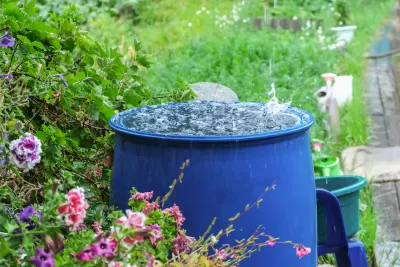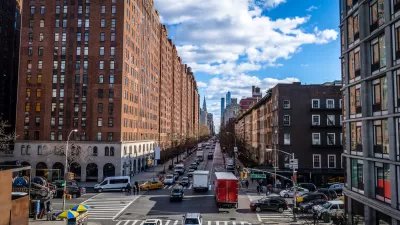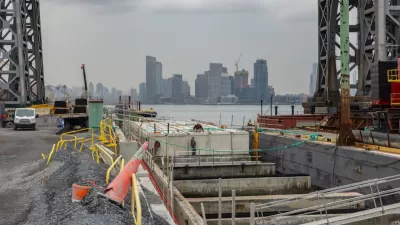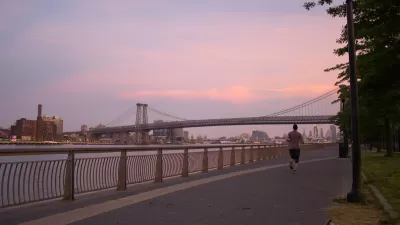Cities like New York and Los Angeles are moving to build green infrastructure as the need for spongier urban spaces becomes more apparent.

Writing in Wired, Matt Simon warns that New York City needs to adapt to protect its citizens and infrastructure from future flooding like the city experienced during Hurricane Ian and recent rains.
As Simon explains, “On a warming planet, it’ll rain more and individual storms will get more intense. This pain will be especially acute in urban areas, which are built on stormwater infrastructure designed to handle the rainfall of yesteryear.” Now, old infrastructure can’t keep up. “Ancient wastewater systems are now tasked with getting rid of ever-bigger inundations.”
Meanwhile, hard, impermeable surfaces like concrete and asphalt effectively seal cities, leaving few places where water can drain into the ground. “Better sewer systems will be indispensable, sure, but planners are also fundamentally reimagining urban areas as “sponge cities” designed to mitigate flooding by absorbing water.”
Today, cities like New York and Los Angeles are working to reverse the problem by building green infrastructure such as rain gardens, bioswales, blue belts, and permeable pavement. In places like Los Angeles, this much-needed water will also help replenish underground aquifers.
According to Simon, “Green spaces don’t just mitigate flooding. They beautify the urban landscape and improve residents’ mental health. They filter out microplastics and other pollutants, keeping them from reaching sensitive water bodies like rivers. And when the weather is hot, they cool neighborhoods, because plants ‘sweat.’”
FULL STORY: New York Needs to Get Spongier—or Get Used to More Floods

Trump Administration Could Effectively End Housing Voucher Program
Federal officials are eyeing major cuts to the Section 8 program that helps millions of low-income households pay rent.

Planetizen Federal Action Tracker
A weekly monitor of how Trump’s orders and actions are impacting planners and planning in America.

The 120 Year Old Tiny Home Villages That Sheltered San Francisco’s Earthquake Refugees
More than a century ago, San Francisco mobilized to house thousands of residents displaced by the 1906 earthquake. Could their strategy offer a model for the present?

Alabama School Forestry Initiative Brings Trees to Schoolyards
Trees can improve physical and mental health for students and commnity members.

NYC Outdoor Dining Could Get a Re-Do
The city council is considering making the al fresco dining program year-round to address cost concerns from small businesses.

HSR Reaches Key Settlement in Northern California City
The state’s high-speed rail authority reached an agreement with Millbrae, a key city on the train’s proposed route to San Francisco.
Urban Design for Planners 1: Software Tools
This six-course series explores essential urban design concepts using open source software and equips planners with the tools they need to participate fully in the urban design process.
Planning for Universal Design
Learn the tools for implementing Universal Design in planning regulations.
Ada County Highway District
Clanton & Associates, Inc.
Jessamine County Fiscal Court
Institute for Housing and Urban Development Studies (IHS)
City of Grandview
Harvard GSD Executive Education
Toledo-Lucas County Plan Commissions
Salt Lake City
NYU Wagner Graduate School of Public Service





























